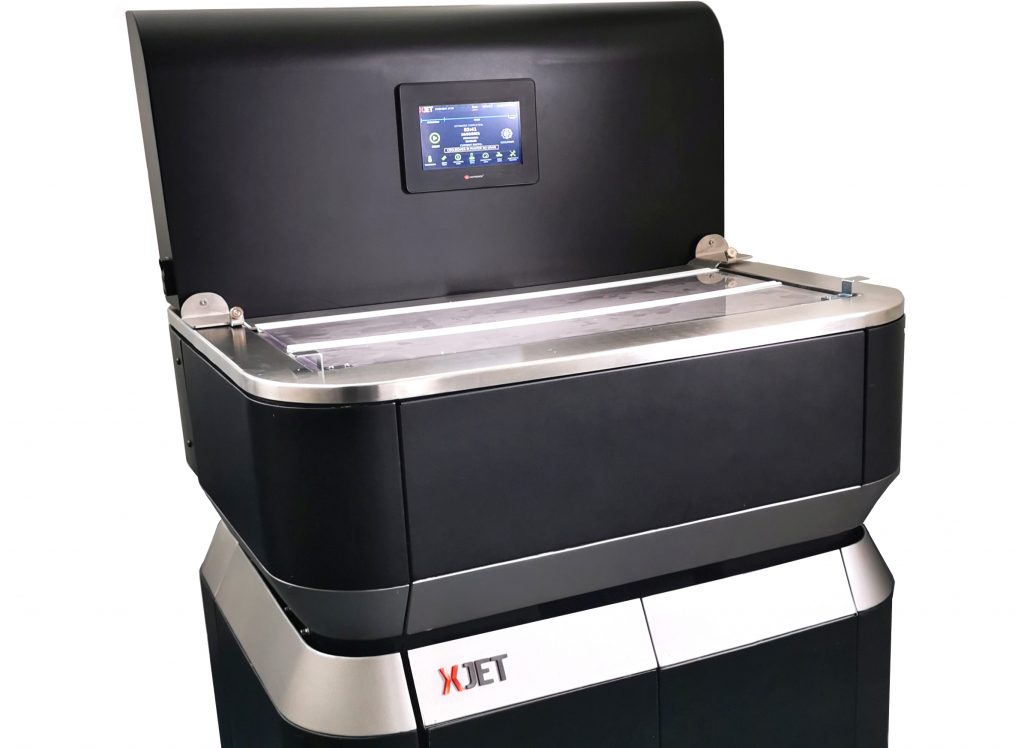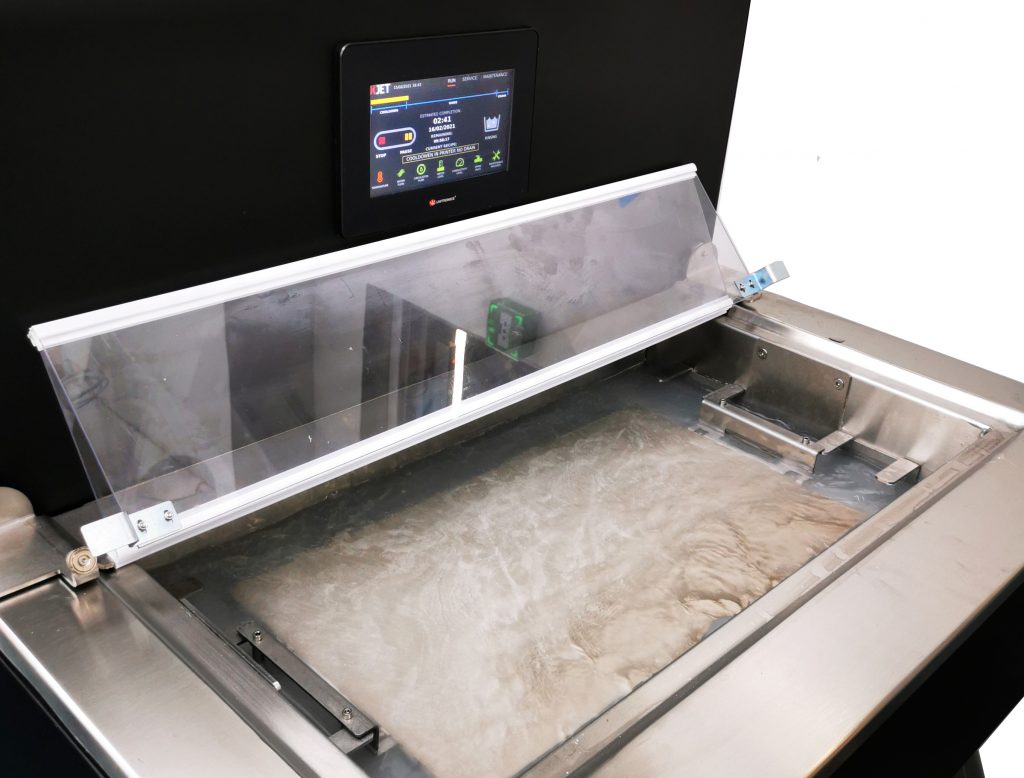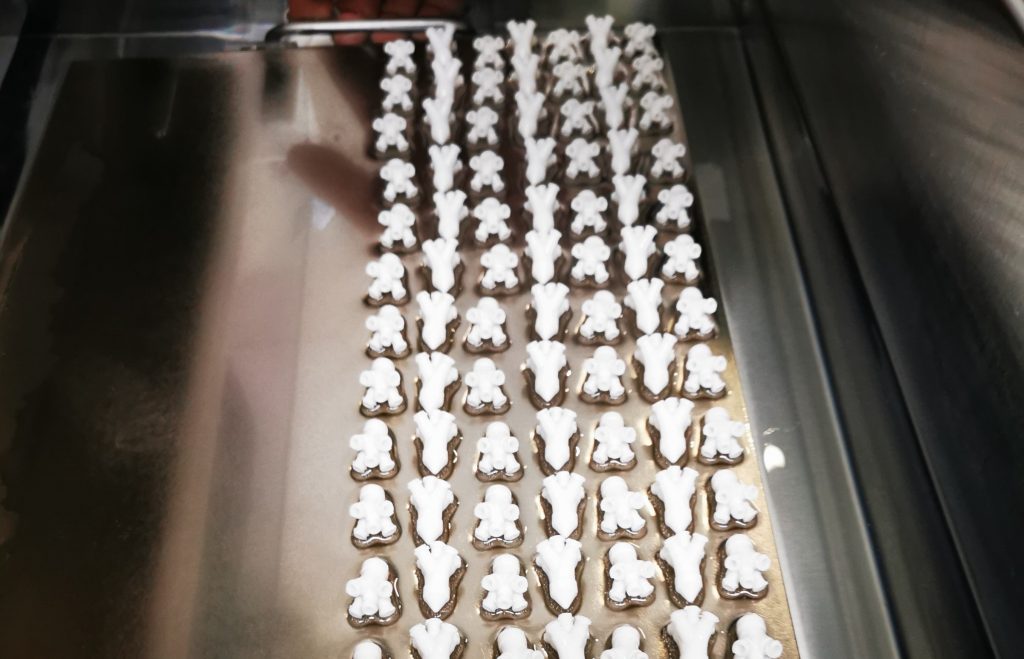Material jetting specialist XJet has announced the launch of its new Support Material Automatic Removal Technology or ‘SMART’ post-processing station.
Marketed as the “last link in the chain” for automated end-to-end 3D printing, the SMART unit uses intelligent algorithms to automatically remove supports from XJet-manufactured ceramic parts. In doing so, the system eliminates the need for trained engineers to closely monitor or manually carry out post-processing tasks, allowing them to spend more time on value-generating activities instead.
“The SMART station delivers the final missing link in AM,” explains Dror Danai, CBO of XJet. “Now XJet’s award-winning soluble support material becomes even easier to remove, making part production really easy, and allowing virtually any geometry, as water can access even the smallest channels that XJet ultra high-quality printing enables.”

XJet’s ceramic 3D printers
Established back in 2005, XJet is best known as a manufacturer of 3D printers powered by its proprietary ‘NanoParticle Jetting’ (NPJ) technology. In essence, the process involves jetting liquid-embedded nanoparticles onto a build plate layer-by-layer, that once deposited, shed their liquid outer ‘shell,’ leaving behind a fully-unified metal component.
Based on this technology, the firm launched its first Carmel 1400 and 700 3D printers in 2017, featuring differently-sized build plates, but the same compatibility with metal and ceramic supports. Initially the XJet marketed its systems towards dental clients, and it went on to partner with Straumann, with the aim of advancing its applications in the sector.
However, the company’s machines have since garnered interest in other areas as well, ranging from the 3D printing of 5G antennas, to medical manufacturing. In 2019, Marvel Medtech leveraged a Carmel 1400 system to create ceramic cryotherapy probes for treating cancer patients, while more recently, Syqe Medical has used the same machine to produce ultra-resistant drug delivery devices.
In that time, XJet has also raised around $135 million, allowing it to continue iterating upon its technologies, and working with BEAMIT, it has previously been able to create unique soluble supports. When released, the firm’s CEO Hanan Gothait said the material would yield “interesting applications,” and now this has come to pass, XJet has opted to take this approach further with its very own post-printing unit.

Being ‘SMART’ about post-printing
Designed specifically for finishing parts produced via XJet’s Carmel 3D printers, the SMART system features multiple programs that automatically remove object supports, so engineers don’t have to. These modes allow users to tweak parameters such as the unit’s water level and flow rate, to suit the needs of any given part, while its algorithm can also make program suggestions where needed.
In practise, the firm says that its software allows users to repeatedly achieve high-yields, while significantly reducing any downtime and costs associated with manual cleaning. The 90 x 150 x 90cm machine also features a tray size that’s compatible with the Carmel 1400 3D printer, making it seamlessly cross-compatible with XJet’s existing range, while its rapid heater is able to warm 5 liters of water per minute.
Owing to these speed and automation features, Danai says that one of the SMART system’s beta adopters has already managed to reduce its finishing time by as much as 90%, thus when used alongside its proprietary support material, he believes that XJet’s technologies are now helping users to finally realise 3D printing’s “design freedom” potential.
“This is all part of XJet’s drive to support manufacturers in a true production environment,” added Danai. “XJet technology is designed for manufacturers who want to build better parts for real-world applications. We examine the whole workflow to see what can be done to reduce production time, minimize operational costs and ensure the premium quality of parts is repeatable.”

AM’s ceramic advances
Despite its excellent heat resistance properties, ceramic is often difficult to 3D print due to its inherent fragility, necessitating the development of new formulations and ways of processing it. In one such case, ExOne recently licensed a process from Oak Ridge National Laboratory that effectively enables the fabrication of ultra-lightweight metal-ceramic parts.
At the other end of the spectrum, researchers at the Slovak University of Technology have developed a novel 3D printing ceramic of their own, that’s specifically designed for use with low-cost FDM machines. The team say that their formulation is unique in that it can be extruded from standard 0.4 mm nozzles, making it more accessible to hobbyist users than similar existing materials.
Elsewhere, such advances have unlocked new 3D printing applications in thermally-sensitive areas such as nuclear power stations. Scientists at the Southwestern Institute of Physics and Shenzhen University, for instance, have produced ‘ceramic breeding blankets,’ that self-sufficiently generate tritium, a fuel used to power the nuclear fission process.
To stay up to date with the latest 3D printing news, don’t forget to subscribe to the 3D Printing Industry newsletter or follow us on Twitter or liking our page on Facebook.
For a deeper dive into additive manufacturing, you can now subscribe to our Youtube channel, featuring discussion, debriefs, and shots of 3D printing in-action.
Are you looking for a job in the additive manufacturing industry? Visit 3D Printing Jobs for a selection of roles in the industry.
Featured image shows XJet’s new SMART post-processing station. Image via XJet.


